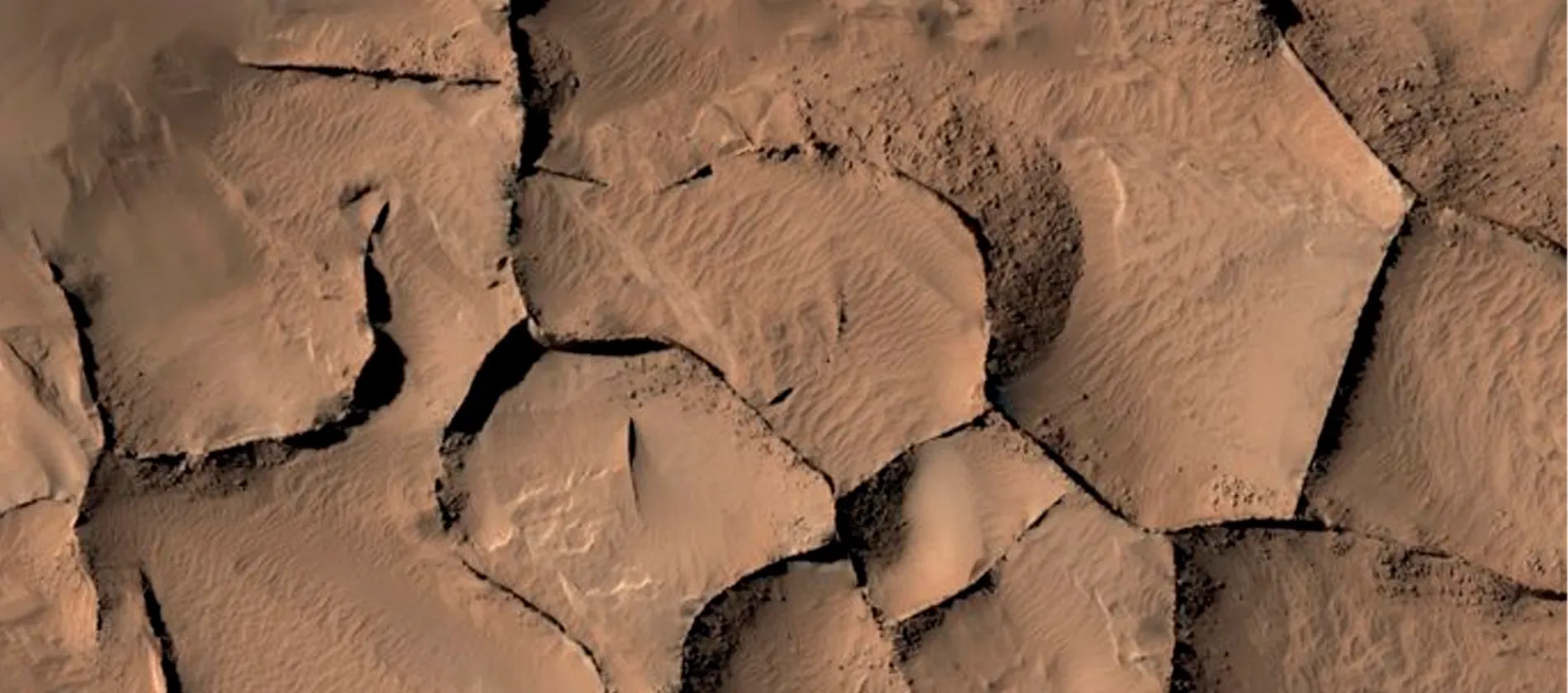The discoveries of the Mars Express
The Mars Express orbiter of the European Space Agency (ESA) has captured images of "spiders" on the surface of the south pole of Mars. These dark and distinctive features are formed when spring sunlight warms the layers of frozen carbon dioxide accumulated during the winter. The resulting gas is released, breaking the ice and dragging dark material to the surface, thus creating the spider-like marks.
The new image from Mars Express shows dark spots, the result of gas and ejected material. The ExoMars Trace Gas Orbiter (TGO), another ESA Mars rover, has also captured similar patterns, but from a perspective that allows to see the spider-shaped channels under the ice.

These dark spots are visible throughout the Mars Express image, especially on the left side, in the vicinity of the region known as the Inca City, whose name is due to its geometric network of ridges, reminiscent of the Inca ruins. This pattern was discovered by NASA's Mariner 9 probe in 1972.
Although it is not known for sure how the Inca City was formed, it is suspected that it could be the result of an ancient crater, with faults filled with lava or other materials. Time and erosion have shaped this region, creating unique landscapes with hills and mounds of different sizes. The "eskers", sinuous structures related to glaciers, could be part of the formation of this region.
In the northernmost areas of the image, the ground shows a clear dust, with some spiders scattered on the plateaus and among the canyons. The prominent mounds and hills of the region reach heights of up to 1,500 meters, formed by the erosion of softer materials.
